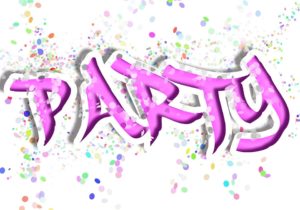Guest Post by Barb Galler-Smith, Fiction Editor, On-Spec Magazine
I’ve been asked how do you know when a story is ready for submission? As an author, it’s always the moment I’m finished. Fortunately another part of my brain (the editor) stops me before I make too big a fool of myself and actually submit it before I’ve done a little bit more work.
Different editors and authors will tell you slightly different things. In my years with On Spec magazine I’ve learned a lot about stories, about when they are ready, and when they only appear to be ready.
What is a first draft? Well, it’s not usually the first thing you put on paper. That would be the “almost” draft, sometimes known as a sketchy outline. Then you might write down the things that fill in that sketchy outline. This might include a note to yourself to check some details, and plot points, and character notes, and the major theme, the premise, and the major conflict(s). THEN you have a pretty decent outline. If you are a “pantser” this process is a little different. But either way, the next step is the “Ugly Draft”.
The “Ugly Draft” is exactly that. It’s the words as they come out of your head without the editor even being aware you are writing. You’ve snuck it in under that annoying part of the brain that stops you from finishing a complete sentence without going back to fix something other than the momentary spelling error. It’s full of homophones, other mistyped words that are actually words (eg. in writing this my brain typed “being aware” but my fingers typed “vein aware”). The end of the Ugly Draft is an easy, but involved process.
You spell check. That can fix a lot.
You search for your buzzwords (that, was, were, could, should, nodded, turned… you get the drift?).
You search for all useless words that end with ly or ly. or ly? etc. These -ly words are adverbs that usually (not always) add nothing. Another useful search is for “weasel words” such as also, very, though, some, or many. These are not specific and good writing demands clarity and specificity. I also like to search for “like” because it’s often used in common speech as a conjunction, which it isn’t.
So you’ve done all your checking and searching and on the computer screen the copy looks pretty darned good. This leaves you at the beginning of the Rough Draft.
You turned off the grammar checker while spell checking because fiction is loaded with fragments, especially dialog, and having that pointed out on 2/3 of the work is irritating. Of course, when the grammar checker was turned off, you also ended up with a few fragments that were just wrong, a few run-on sentences, a few sentences so unwieldy their meaning was lost, some misplaced modifiers, actions out of order and a dozen more foibles.
The real Rough Draft is that draft in which you fix all those things you didn’t notice before to the very best of your ability. After that, the process varies a little bit depending on how you plotted, researched, or even how you think (sequentially or randomly) which can affect the order of sentences, actions, and scenes.
Let it sit for a couple of days (unless you waited until the last minute as I usually do and cranked it out in an afternoon–outline, ugly, and rough all in one).
Then send it to one beta reader who will read it and let you know if it all makes sense. This is important. That reader need not be an editor or another writer. That person does need to be able to tell if a story works or not, and preferably why it may not work, where it slows (if it does), or anything else critical to the story. If you have written science fiction and don’t hold a degree in astrophysics or biochemistry, you might also want to run it by someone who passed physics or biochemistry in the past five years. Or do a heck of a lot of research for that one line in the story!
After that, you fix anything wrong with it. At this point you also have to decide if the beta reader is right (usually) or is out to lunch and knows utterly nothing about your art (not usually). Voilà! You have done every single thing you know how to do to make the story perfect. You now have a finished FIRST DRAFT!
If you have a lot of short story writing experience and some good story-telling skills, this could also be your Submission Draft.
You may have noticed I said Submission “Draft”. Yep, and this is where I get your story in my Submission piles.
So how do I know it’s not ready?
The list is long:
You sent an Ugly Draft. You sent a “First Draft”. It doesn’t follow our specific guidelines regarding format, word count limits, preferred spelling and usage. It’s not “Speculative” not “fiction”. It’s SF/F elements aren’t integral to the actual story. It’s full of profane and vulgar language for NO reason. It’s got gratuitous violence, graphic sex descriptions, and anything else that could overstep a general PG-13 rating and for NO reason. It’s hate-mongering. And as the King of Siam in the musical used to say “et cetera, et cetera, et cetera”.
We also note things that are more subtle.
1) It takes too long to get going. The actual story starts somewhere around the middle of the submission. That means there’s a whole lot of back story we just do not need there.
2) The pacing slows to a crawl in the middle. This usually happens because nothing is happening.
3) Talking heads in which there is no story along with it. Nothing happens.
4) Dialog has characters telling each other things they already know, but the author wants to makes sure the readers know this too.
5) It’s dull.
6) It’s really dull.
7) It’s really really dull. (You get my point? Something needs to happen!)
8) The characters have no aspect that the readers can relate to. Some of my favourite characters from On Spec stories: a puppet, a contract killer, a senior farm wife from Saskatchewan. They share nothing in common but each imparts a sense of humanity I can relate to.
Nothing is ever sent to the editor without flaws. It’s our job then to read through a good story, and find those places in which our skill or knowledge can make a story better. Our goal is to make that story better for everyone–the author, editor, and most importantly, the reader who WILL notice little things. We want that reader to get to the end and say “That was a satisfying read!”
So if you have done the best you possibly can (and do not over edit it yourself–but that’s another blog!), please consider it YOUR Submission Draft. Send it out. While it’s out there, write another story. Then another.
Bottom line, how do I know it’s ready and not “rough”? I know when it propels me from start to finish on the first reading. I miss little things like minor typos, unwieldy sentences, odd settings, and minor science errors. It’s ready because it’s a solid, interesting story.

Barb Galler-Smith resides in Edmonton. She’s been an editor with On Spec magazine since 2008. She’s co-author of the Druids Saga historical fantasy trilogy: “Druids”, “Captives”, and “Warriors”–all available from EDGE Science Fiction and Fantasy Publishing. She is an award-winning writer and has judged both Canadian and international writing competitions. She loves reading short fiction, teaching writing, and freelance editing.


